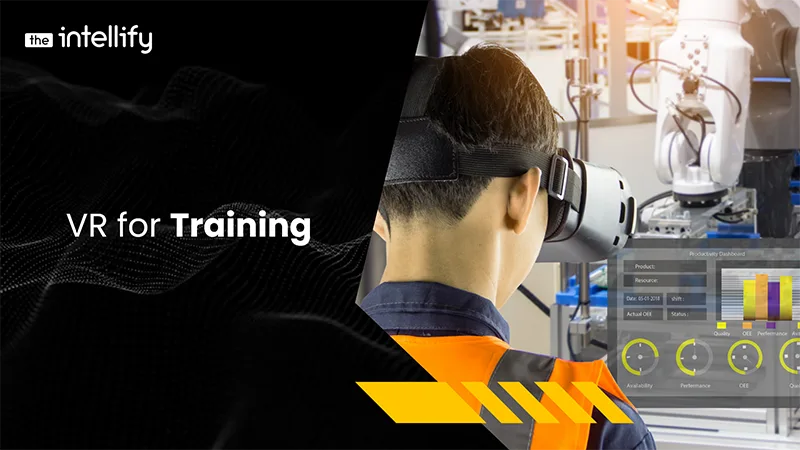Virtual Reality Training
Virtual Reality App Development has already penetrated industries and several business verticals. By leveraging 3D mapping to create a simulated environment, the end-user experience becomes highly engaging and largely immersive. This capability is why more organizations actively integrate VR technology into their operations.
If you’re unsure where VR can be applied effectively, here are some impactful use cases to illustrate its versatility:
VR Training: Practical Use Cases
Of all VR technology applications, training is one of the most transformative. Here’s how VR-based training enhances various types of corporate and industry training.
Machinery Training for Employees with VR
Machinery training has traditionally been theoretical, often limited to presentations explaining equipment functions. Safety concerns typically restrict practical, hands-on training. With VR technology for machine training, trainees can now have immersive, risk-free practice, enhancing their ability to operate equipment in real-life settings while prioritizing safety.
Fire & Safety Training in a Virtual Environment
Fire and safety training can expose new employees to hazardous situations. VR-based training involves wearing a VR headset that simulates real-time, lifelike emergency scenarios. This lets them experience high-risk situations virtually and learn effective response strategies in a controlled, virtual work environment.
VR in HR Training and Development
Whether it’s developing soft skills, improving customer interactions, giving an office tour, or demonstrating a product, VR technology allows HR training without requiring physical presence. With VR Learning Apps in the workplace, employees gain valuable experience, onboarding and training are efficient, and they gain a deeper understanding of company culture and policies.
How VR is Transforming the Training Industry
Employee training is vital when welcoming new hires. Proper training is essential before new employees dive into company workflows. Traditionally, this process has been manual and time-intensive, spanning days or even weeks. Today, HR professionals are embracing VR-based training modules, using VR headsets and applications to enable remote training.
This approach saves travel costs and provides real-time, immersive training in a simulated, virtual work environment. Gone are the days when employees had to travel for training—VR technology now allows them to engage from anywhere.
Why Your Organization Should Adopt VR for Training
With the onset of VR technology, HR professionals are shifting to digital training modules, ensuring a more engaging and impactful experience. VR-based training offers employees a hands-on experience, boosting engagement and improving information retention. VR technology enables dynamic learning experiences that absorb employees fully, enhancing productivity and fostering skill mastery.
The Intellify’s Expertise in VR Training Solutions
As a frontrunner in VR Learning Apps for training, The Intellify has developed specialized applications to facilitate VR-based training. One of our popular apps offers an interactive interface compatible with platforms like Oculus Go, Oculus Quest, and HTC Vive, allowing employees to gain a truly immersive learning experience that effectively prepares them for real-world applications.
Conclusion
The rise of VR technology has reshaped corporate training, delivering a highly immersive experience that boosts employee engagement and skill development. From machinery handling to HR training, VR-based training enhances learning outcomes and ensures workplace safety.
With solutions from The Intellify, organizations can leverage VR for better workforce preparedness and operational excellence. Contact Us today for a consultation and more information on how VR Learning Apps can benefit your team.


